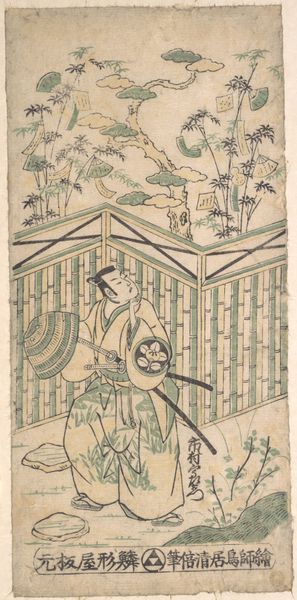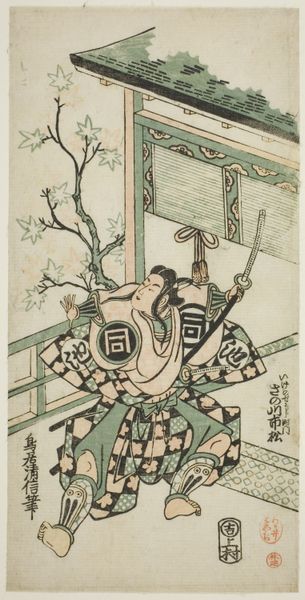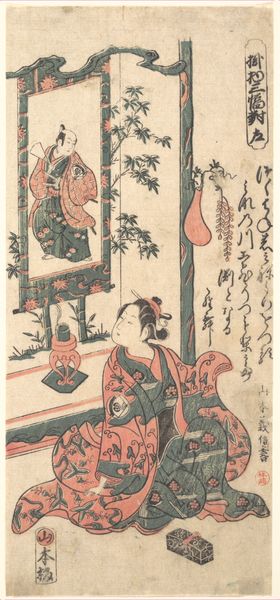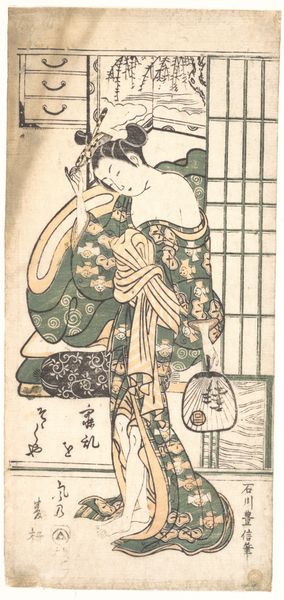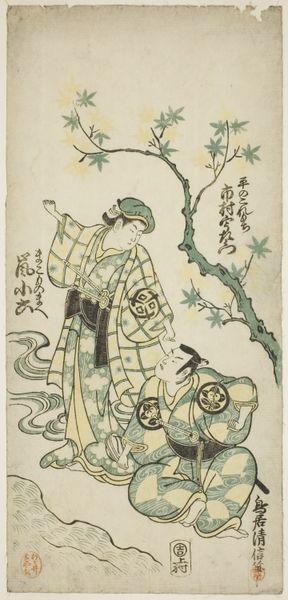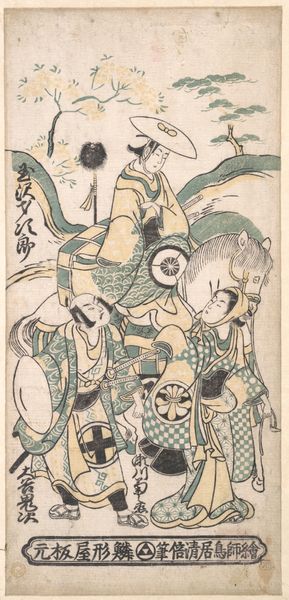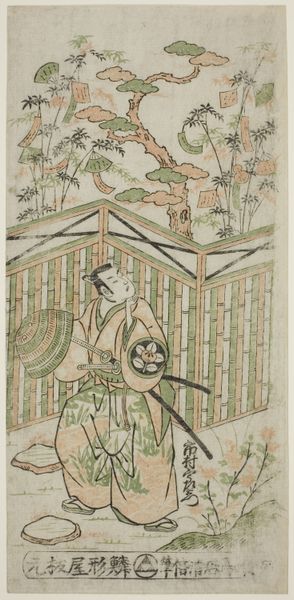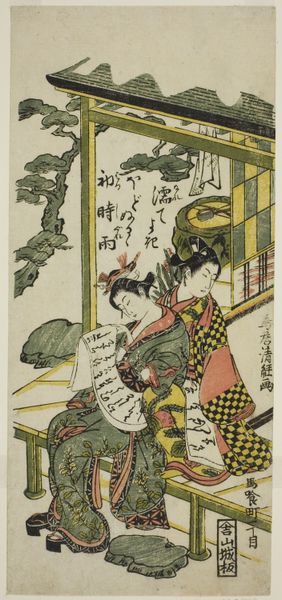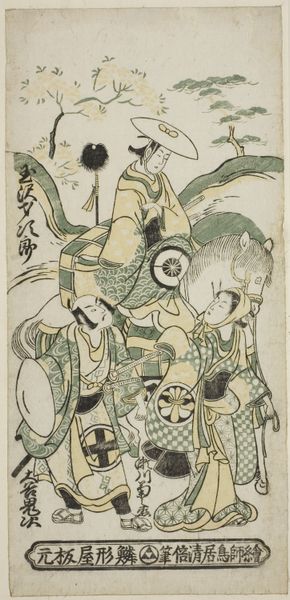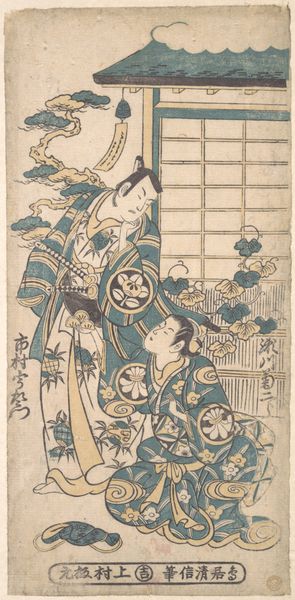
Kabuki Actor Onoe Kikugorō I in The Belle of Asakusa Temple (Keisei Asakusa no Kane) 1754 - 1755
0:00
0:00
print, woodblock-print
#
portrait
# print
#
asian-art
#
ukiyo-e
#
japan
#
woodblock-print
#
pen work
#
genre-painting
Dimensions: 12 1/2 x 5 3/4 in. (31.8 x 14.6 cm)
Copyright: Public Domain
Curator: This print, currently displayed at the Metropolitan Museum of Art, is titled "Kabuki Actor Onoe Kikugorō I in The Belle of Asakusa Temple," created between 1754 and 1755 by Torii Kiyohiro. Editor: Immediately striking is its verticality, further enhanced by the upward gaze of the subject and slender tree in the backdrop. The colour palette feels so harmonious. Curator: Indeed. It is an example of Ukiyo-e, or "pictures of the floating world," a genre flourishing during the Edo period. These woodblock prints provided affordable art for the merchant class, often depicting kabuki actors, beautiful women, or scenes from everyday life. Editor: Here we see Onoe Kikugorō I, not in a theatrical pose per se, but caught in what seems like a quotidian moment. Notice the vegetable-laden baskets and the humble sandals. It's a departure from the grandiose portraits often associated with celebrity culture. Curator: Precisely. Consider how the cultural milieu of the Edo period celebrated popular heroes. This print reflects a complex dynamic, using visual representation to solidify Onoe Kikugorō's iconic status but also presenting him in a relatively common role from daily life, and making it accessible to the growing merchant class. Editor: Note the use of line. The stylized folds of his robes contrast against the grid of the doorway screen. Furthermore, observe the meticulous detail of the crest on his sleeve, identifying his lineage for all to appreciate his lineage. Curator: Moreover, we can consider its dissemination as merchandise and a form of advertising. Such works were essential for theater publicity, influencing fashion and disseminating values within Japanese society. This served the theaters economically but shaped cultural values. Editor: Thinking about it from a purely structural standpoint, I appreciate how Kiyohiro created depth with an implied third dimension in his design, from the detail within the closest objects down to the relative simple texture of the latticework. Curator: So true. This image functions as a snapshot of a cultural moment, frozen for our viewing pleasure. Editor: From a contemporary vantage, analyzing it opens a valuable doorway into our ever-evolving notions about identity, labor, and image distribution.
Comments
No comments
Be the first to comment and join the conversation on the ultimate creative platform.
